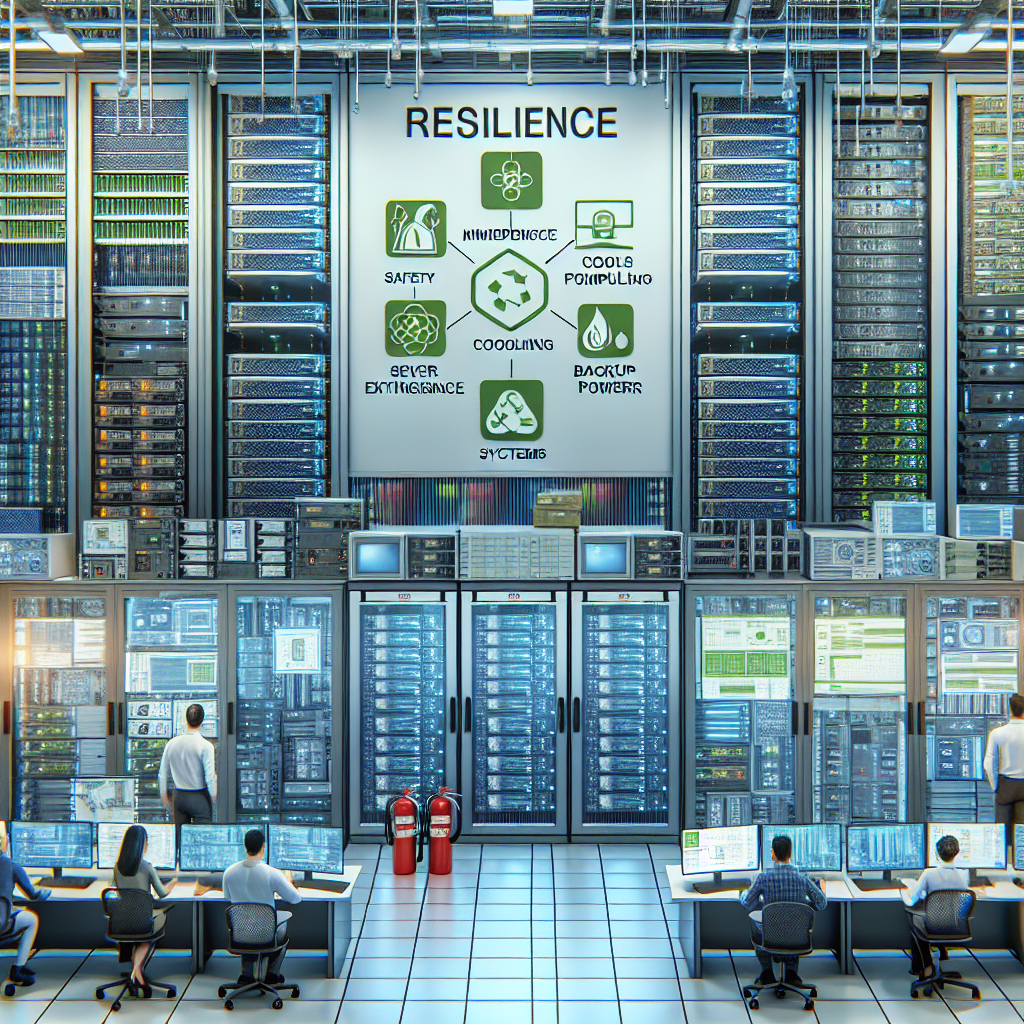In today’s digital age, the data center plays a crucial role in ensuring the smooth operation of businesses and organizations. As technology continues to advance, the amount of data being generated and stored is growing exponentially. This makes it more important than ever to build a resilient data center that can withstand unexpected events and ensure business continuity.
Building a resilient data center involves implementing best practices and strategies that enhance its reliability, availability, and security. Here are some key practices to consider when designing and building a resilient data center:
1. Redundant Power and Cooling Systems: Power and cooling are critical components of a data center infrastructure. Implementing redundant power and cooling systems ensures that the data center can continue to operate even in the event of a power outage or cooling system failure. This can be achieved through the use of backup generators, uninterruptible power supplies (UPS), redundant cooling units, and HVAC systems.
2. Robust Physical Security: Data centers house sensitive and valuable information, making them a prime target for security breaches. Implementing robust physical security measures such as access control systems, surveillance cameras, and security guards can help protect the data center from unauthorized access and potential threats.
3. Data Backup and Recovery: Data loss can have serious consequences for businesses, which is why implementing a robust data backup and recovery strategy is essential. This includes regularly backing up data to offsite locations, implementing disaster recovery plans, and testing backup systems to ensure they are functioning properly.
4. Network Redundancy: Network downtime can disrupt operations and impact the availability of services. Building network redundancy by implementing multiple internet service providers (ISPs), redundant network switches, and routers can help ensure uninterrupted connectivity and minimize the risk of network outages.
5. Regular Maintenance and Testing: Regular maintenance and testing of data center infrastructure components are essential to identify and address potential issues before they escalate into major problems. This includes conducting routine inspections, testing backup systems, and performing preventive maintenance on critical equipment.
6. Scalability and Flexibility: Building a resilient data center also involves designing it to be scalable and flexible to accommodate future growth and technological advancements. This includes planning for expansion, upgrading equipment and systems as needed, and ensuring that the infrastructure can adapt to changing business requirements.
In conclusion, building a resilient data center requires a combination of best practices, strategies, and technologies to enhance its reliability, availability, and security. By implementing redundant power and cooling systems, robust physical security measures, data backup and recovery strategies, network redundancy, regular maintenance and testing, and scalability and flexibility, organizations can build a data center that can withstand unexpected events and ensure business continuity. Investing in building a resilient data center is essential for organizations looking to protect their data and ensure the smooth operation of their business in today’s digital world.


Leave a Reply